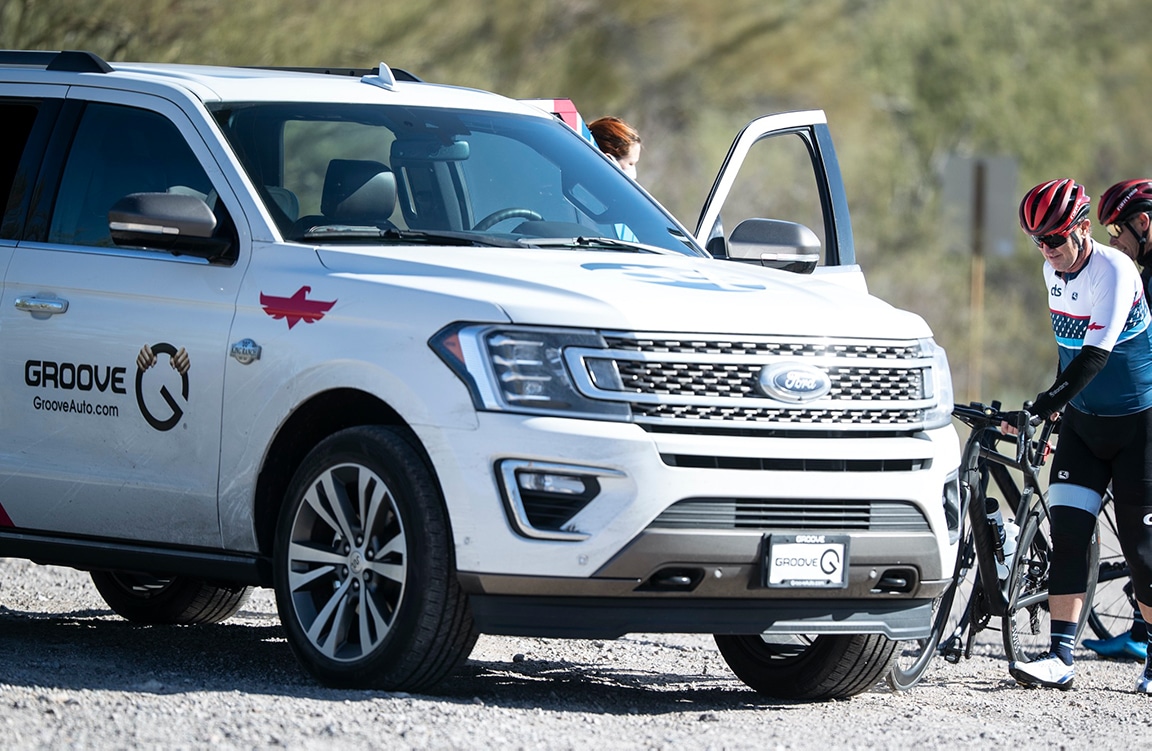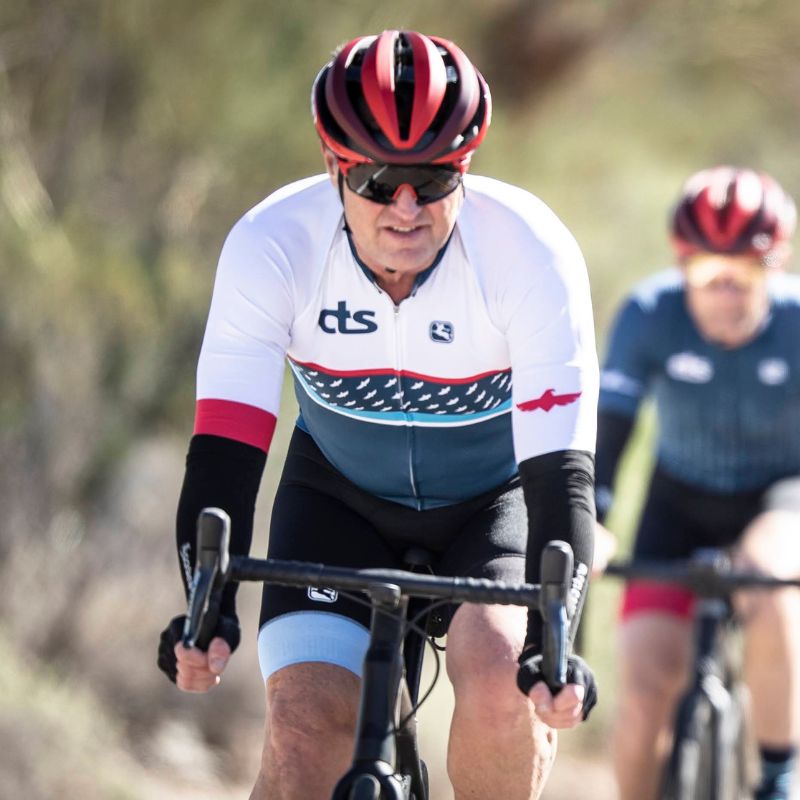
When to Quit a Race: An Athlete’s Guide to the Toughest Decision in Sport
By Chris Carmichael,
Founder and Head Coach of CTS
I’m not a quitter, and I’m sure you are not either, but as the old saying goes, sometimes discretion is the better part of valor. Last weekend at Unbound Gravel in Emporia, Kansas, a combination of heat and strong headwinds put a lot of riders deep in the hurt locker and many had to the make the difficult decision of whether to continue or take a dreaded DNF (did not finish). Whether it’s heat, cold, fatigue, injury, mechanical failure, gastric distress, or a long list of other potential problems, if you are involved in endurance sports long enough you will inevitably be faced with the decision of whether to stop or continue, quit or keep going. And while we lionize those who persevere in the face of overwhelming adversity, and spend hours and pages expounding on the virtues of grit and determination, there is wisdom in knowing when it’s time to pull the plug. None of us wants to do it, so we don’t talk about how to do it, and that puts people at risk of hurting themselves or requiring others to come to their rescue. So, let’s talk about how to make good decisions on bad days.
Step 1: Plan Ahead
Preparation is the best way to avoid being in a situation where quitting is an option. Great fitness is your best advantage because it increases your capacity to absorb adversity before your performance suffers too much. Think about it this way, if you are barely fit enough to complete an event you don’t have the bandwidth to work through a serious setback. Greater fitness also means you can move faster, which reduces the amount of time you’re exposed to the elements.
Planning is also crucial for minimizing the chance you’ll face a go/no-go decision in the middle of an event. Examine the potential challenges you might face on course and carry gear that can help you out of a jam. For instance, if tire-slashing gravel is a feature of your event it makes sense to carry tools and supplies for tire repair. If you’re headed to high altitude and there’s even a remote chance of rain, carry a rain jacket, a skull cap and warm gloves (at minimum) so you can ride through a cold thunderstorm. Obviously a cyclist can’t carry a whole bike shop or wardrobe, but there are some crucial parts and tools that are small and easy to pack: multitool with chain breaker, master link, one set of brake pads (disc or caliper), one set of cleats (with screws), tube (at least one), tire boot and/or tubeless tire repair supplies, brake and derailleur cable (if running cables instead of electronic shifting and hydraulic braking). When it comes to inflation devices, you can carry CO2 cartridges to speed up the inflation process, but a pump is a safer bet in case you have multiple flats.
Step 2: Mentally rehearse responses to bad situations
From the comfort of your living room, conjure the worst possible scenarios you could encounter during your event. You want to play out these scenarios in your head with as much detail as possible. If it involves bicycle repair on the side of a dirt road, how long is the grass on the shoulder? Is the heat radiating off the road? Where are you going to put your tools so you don’t lose them?
Maybe your scenario is running out of water on a hot day more than hour away from the next aid station. What are you going to do? Can you drink from a stream? Do you have a filter? Can you ask other riders for water? If you can’t drink from a stream, can you at least soak your clothing to cool down and slow the process of dehydration? The point of mentally rehearsing your responses to worst case scenarios is to reduce the amount of stress you experience when you actually encounter challenges.
Feel Stronger in 6 Weeks — No Matter Your Age
Climbs feel steeper? Recovery slower?
You’re not done getting faster — you just need a smarter plan.
The 6-Week Masters Power Build Coaching Program is designed for cyclists 50+ who want to boost power, recover faster, and ride stronger — all with expert 1:1 coaching.
- Personalized 6-Week Training Plan
- 1:1 Coaching + TrainingPeaks Premium
- Mobility & Strength Bonus Guides
💪 Guarantee: Stronger or free.
Start your 6-week journey for $149Step 3: Set boundaries
It is important to evaluate what is at stake and your tolerance for risk. If your pro contract or lucrative sponsorship is on the line, you’re likely to accept a lot of risk in order to get a result. But the vast majority of endurance athletes are competing for fun and the pursuit of personal goals, and you have to set realistic boundaries for yourself in terms of the risks you’re willing to take. Personally, a finisher medal isn’t worth ending up in a medical tent, so if continuing is likely to end up that way I’ll take the DNF.
How to make the DNF decision on race day
When everything goes sideways on race day and you’re faced with the choice between dropping out and continuing, you have to take your emotions out of the equation and analyze the facts as they are. Your passion and determination are crucial components of your performance, but at this moment they can also lead you to make poor decisions that put you in danger. Here are some of the questions to consider:
► Free Cycling Training Assessment Quiz
Take our free 2-minute quiz to discover how effective your training is and get recommendations for how you can improve.
- Is the situation dangerous or uncomfortable? Getting soaked might be uncomfortable, but getting hypothermia is dangerous. Riding in 100-degree heat is definitely uncomfortable, but may not be dangerous if you have water, ways to cool off, and you can still consume fluids without gastric distress. Riding with abrasions hurts, but continuing following signs of a concussion is dangerous.
- Do you have the gear necessary to continue safely? If you’re already cold and heading into conditions that will be even colder and don’t have the proper gear, you’re putting your health at risk. But if you have the necessary gear to stay warm and safe, then you can consider continuing. If you’ve exhausted your supply of tubes and tire repair options and already lost hours in the process, it may not be wise to continue.
- Can you stay adequately fueled and hydrated? Because of generous cutoffs, many cyclists and runners are able to continue and finish, even if that means going a lot slower than they hoped. But if an athlete is nauseated to the point they can’t consume fluids or calories, it is possible their stomach could settle with time but you have to consider whether they can make it to the next aid station safely.
- Will you put others at risk by continuing? If you are a danger to yourself or to the competitors around you, you have no business continuing. And while fellow competitors, event staff, and emergency personnel will help you if you need it, don’t knowingly put other people in a situation where they have to rescue you.
Non-negotiable reasons to stop
Sometimes the need to stop an athlete from continuing is obvious, but often it’s obvious to everyone but the athlete themselves. This is where a good support crew becomes invaluable, and where event officials have to be willing to be “the bad guy”. I have had to be the one to pull athletes from races. Although you only do it when all other options have been exhausted, it is still tough–even when you know it is the right choice for the athlete’s health and safety. I consider the following non-negotiable reasons for an athlete to stop: concussion symptoms, disorientation/confusion, lack of coordination, inability to consume food/fluids, persistent vomiting, or a physical injury that is likely to become more severe or increase risk for a subsequent injury if the athlete continues (running on a broken foot or riding with a broken wrist, for example).
No one wants to quit, and as coaches we do everything we can to ensure athletes are prepared to reach the finish line. But there are instances when taking a DNF is the wise choice. The key is to take the time to think through the process above so you don’t pull the plug too soon or unnecessarily.
► FREE Mini-Course: Learn How to Maximize Your Limited Training Time
Learn step-by-step how to overcome limited training time and get faster. Walk away with a personalized plan to increase your performance.
"*" indicates required fields


Comments 5
Excellent article. I always benefit from your articles. Thank you. Larry
Never be afraid to take a break, a lot of people want to hammer through the course, but with any endurance race the biggest victory is just finishing. If you know when to stop and stay healthy there’s absolutely no reason to get sick or lose abilities to make a good decision.
2017 Ca Alps Deathride was a really hot one and my first time completing it. I remember lacking excitement on the top of #5 Carson as I was dehydrated and beginning to experience altitude sickness when I usually don’t experience altitude sickness. I threw away a perfect ice cream sandwich and a perfect Pepsi. I lacked enthusiasm as I signed the 5 pass finisher board. I knew I would be sagging back if I stayed on the top of carson much longer. I hopped on my bike and I felt better as I dropped down Hwy 88. I don’t it think sunk in, until I reached the car that I actually finished the Deathride…
Excellent info Chris. Some good points, including simple ones like finding shade, (if possible), for repairs, planning the scenarios out in your head before the event, being prepared, (I see many competitors in events with very little supplies, equipment ), etc.
I’ve seen many athlete’s wanting to “fight to the finish”, and attempting to continue when they can hardly remember their name. And, because folks paid an entry fee, and the organizers usually have medical help on hand, want to “preserve their reputation, they’re more pron to run themselves into the ground, get lost, over heat, or a myriad of other reasons to make it necessary to be “rescued”. Some pledging they’ll stay on the course no matter what, even into the night, to tell themselves their no quitter.
I have to commend Roger Federer & Naomi Osaka for with drawing from major events, (one for physical, the other mental / emotional reasons), even with big sponsors, commitments, reputation, etc. I think many pros, and even amateurs are realizing it’s not worth damaging your health to complete a goal.
Great advice; will follow through.